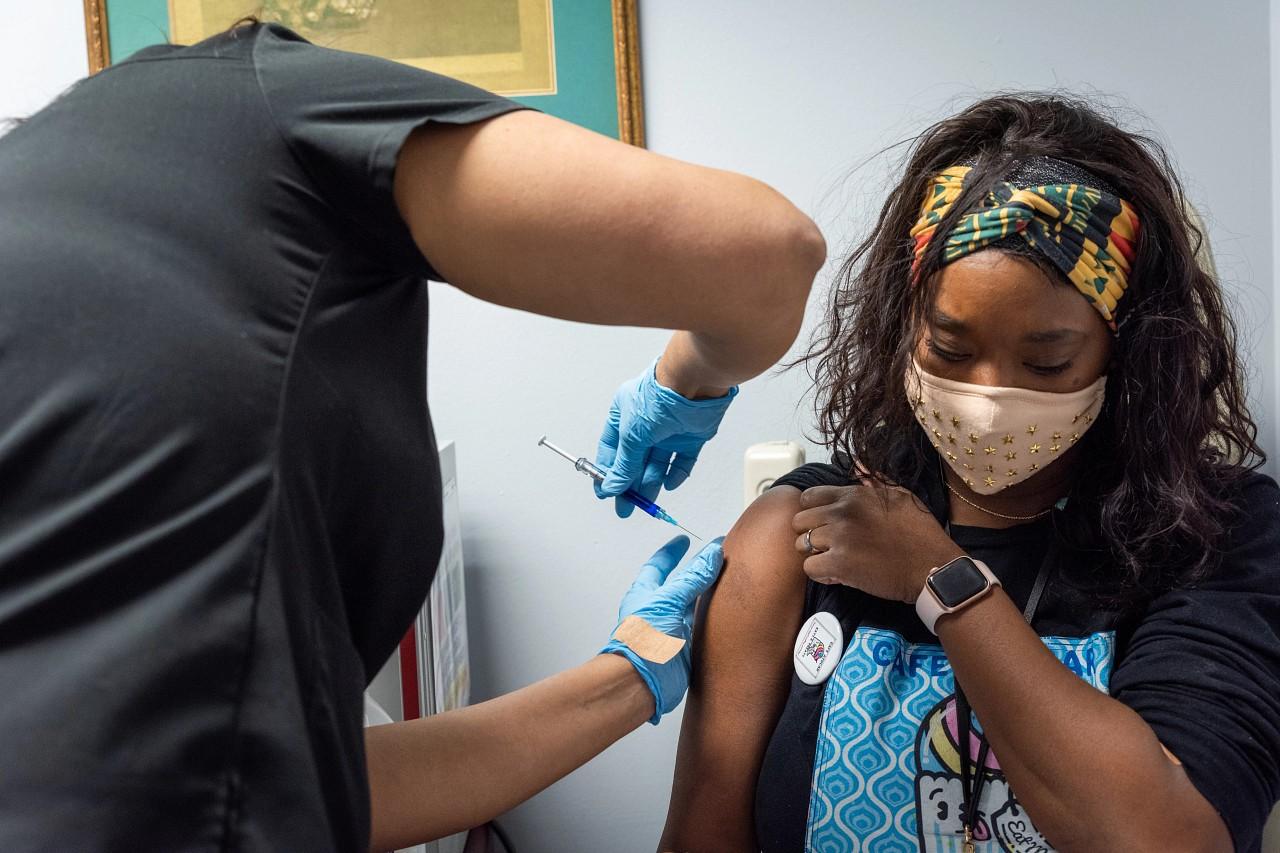The vaccine effectiveness (VE) of the Novavax COVID-19 vaccine was 79.5% among US adolescents before the SARS-CoV-2 Omicron variant emerged, but the monoclonal antibody combo tixagevimab and cilgavimab showed little benefit for nonhospitalized COVID patients, according to two randomized, controlled trials published today in JAMA Network Open.
3 vs 14 infections per 100 person-years
In an ongoing expansion of the phase 3 randomized, controlled PREVENT-19 trial, a team led by Novavax researchers assessed the neutralizing antibody response to the vaccine among 2,232 adolescents aged 12 to 17 years enrolled at 73 sites from April 26 to June 5, 2021. The study had previously shown efficacy among 18- to 25-year-olds.
Participants were randomly assigned in a 2:1 ratio to receive either two intramuscular Novavax injections or a saline placebo 21 days apart, and serum samples were collected on days 0 and 35. The adolescents also reported adverse events in an electronic diary for 7 days after each injection and were followed for 28 days after the second dose.
The average age among 1,487 Novavax recipients and 745 in the placebo group was 13.8 years, 52.5% were boys, 74.4% were White, and 16.1% had previously tested positive for COVID-19.
The ratio of neutralizing antibody geometric mean titers in adolescents compared with 18- to 25-year-olds was 1.5 (95% confidence interval [CI], 1.3 to 1.7). A total of 20 mild COVID-19 infections were identified after a median of 64 days of follow-up, including 6 cases among Novavax recipients (incidence, 2.90; 95% CI, 1.31 to 6.46 cases per 100 person-years) and 14 cases among the placebo group (incidence, 14.20; 95% CI, 8.42 to 23.93 cases per 100 person-years), for a VE of 79.5% (95% CI, 46.8% to 92.1%).
VE against the Delta variant, the only strain identified through whole-genome sequencing, was 82.0% (95% CI, 32.4% to 95.2%).
Most adverse events were mild to moderate, were transient, and occurred more often after the second Novavax dose. Serious adverse events were rare, and their occurrence was similar in both groups (15.9% in vaccine recipients vs 15.6% in the placebo group). No deaths or cases of anaphylaxis, Guillain Barre syndrome, blood clots, myocarditis, or pericarditis occurred, and no participants disenrolled from the study owing to adverse events.
"The vaccine is expected to increase uptake in adolescents, more than 22% of whom have not yet received a full vaccination regimen with mRNA vaccines," the study authors wrote. "A favorable safety profile, convenient storage and transportation requirements, and induction of broad, cross-reactive immune responses with the potential to provide protection against new variants suggest that NVX-CoV2373 [Novavax] offers an important choice for vaccination of younger individuals in the fight against the current COVID-19 pandemic worldwide."
Most adverse events were mild to moderate, were transient, and occurred more often after the second Novavax dose.
In the United States, Novavax is authorized for emergency use among people aged 12 years and older.
Monoclonal antibodies show only modest benefit
Two phase 2 randomized, controlled, University of Washington-led clinical trials that were part of the Accelerating COVID-19 Therapeutic Interventions and Vaccines (ACTIV)–2/A5401 platform evaluated the safety and efficacy of the long-acting monoclonal antibody combination tixagevimab-cilgavimab given intramuscularly (IM) or intravenously (IV) to nonhospitalized US adults with recent COVID-19 symptom onset from February 1 to May 31, 2021, before the emergence of Delta or Omicron.
A total of 229 adults were randomly assigned for the IM study, and 119 were assigned to the IV study. The primary modified intention-to-treat group included 223 participants assigned to receive either IM tixagevimab-cilgavimab (106 participants) or placebo (117) with a median age of 39 years and 114 assigned to receive the combo IV (58 participants) or placebo (56) with a median age of 44 years. Participants enrolled a median of 6 days after COVID-19 symptom onset. Most were unvaccinated.
Enrollment in the IV study was stopped early based on a decision to focus on the IM product.
No significant differences were seen in time to symptom improvement for IM or IV tixagevimab-cilgavimab versus placebo. A greater percentage of participants in the IM treatment group had nasopharyngeal SARS-CoV-2 RNA levels below the lower limit of quantification on day 7 than placebo recipients (80.2% vs 64.6%; adjusted risk ratio, 1.33) but not on days 3 or 14. A joint test across all time points favored treatment. No such differences were seen for IV treatment versus placebo. No safety signals were observed with IM or IV treatment.
"Therapeutic options for COVID-19 remain limited," the researchers wrote. "At present, there are no mAbs [monoclonal antibodies] available with activity against the circulating SARS-CoV-2 variants. Our findings support IM thigh administration of mAbs, a route that should be considered in development of mAbs for SARS-CoV-2 infection."

















